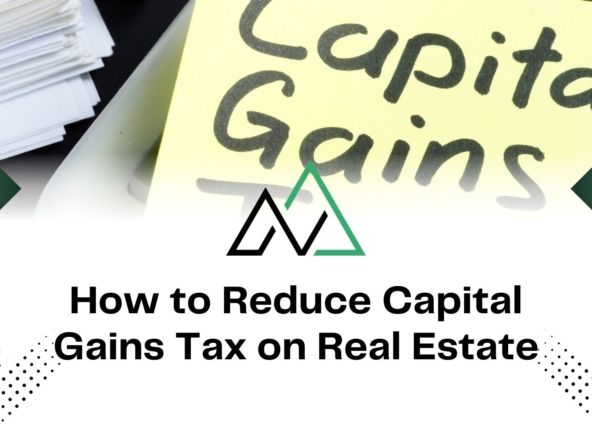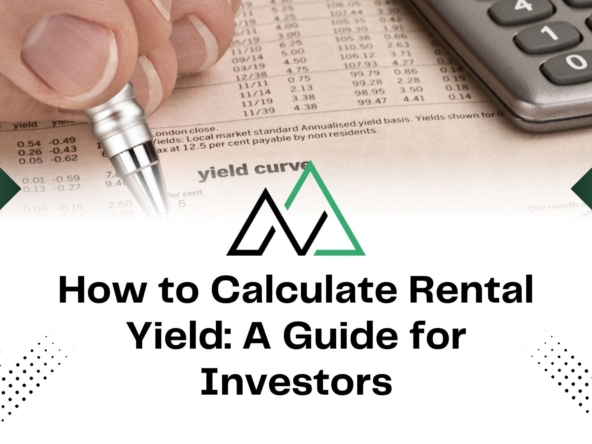Property investment no longer requires massive capital or industry connections. Modern strategies like collective funding allow individuals to pool resources for commercial or residential projects. New Homes Alberta, a trusted partner for property guidance, simplifies this approach for Canadians seeking accessible opportunities.
This guide breaks down how digital platforms connect investors with vetted projects. You’ll learn how leading services like Fund rise and Equity Multiple streamline entry into the estate market, whether through equity shares or debt-based agreements. With over a decade of expertise, New Homes Alberta (403-305-9167) ensures clarity on fees, risks, and selection criteria.
We’ll compare how different models prioritize passive income versus long-term growth. Detailed examples show how to evaluate returns, diversification strategies, and platform reliability. First-time participants gain actionable steps to start building wealth through property without traditional barriers.
Key Takeaways
- Collective funding opens property investments to smaller budgets
- Platforms vary in focus (equity vs. debt) and fee structures
- Due diligence minimizes risks in project selection
- Portfolio diversification balances income and growth potential
- New Homes Alberta provides localized insights for Canadian investors
Introduction to Real Estate Crowdfunding
Gone are the days when only the wealthy could invest in large-scale property developments. Online platforms now let multiple participants combine resources to fund commercial or residential ventures. This approach lowers entry barriers, allowing individuals to participate with smaller amounts while accessing diversified projects.
Digital services connect backers with vetted opportunities through pooled funds. Unlike traditional methods requiring six-figure sums, these platforms often start at $500-$5,000. Investors choose between equity shares or fixed-income agreements, depending on their financial goals.
| Aspect | Traditional Property Investment | Collective Funding Model |
|---|---|---|
| Minimum Capital | $50,000+ | $500+ |
| Access to Deals | Limited by connections | Pre-screened listings |
| Diversification | Single property focus | Multiple projects |
| Time Commitment | Active management | Passive income options |
Thorough research remains critical. Leading platforms provide detailed project reports covering location analytics, developer track records, and projected returns. Over 60% of Canadian participants allocate funds to both housing complexes and retail spaces, balancing risk across sectors.
This sector’s rapid growth—projected to exceed $300 billion globally by 2030—offers choices from urban condos to industrial warehouses. New Homes Alberta helps navigate these options, ensuring alignment with personal financial strategies.
What is real estate crowdfunding
Collective property funding operates through digital marketplaces where individuals contribute funds toward commercial or residential ventures. These platforms aggregate smaller amounts from multiple backers, enabling shared ownership or debt-based agreements. Unlike conventional methods, this approach removes six-figure entry barriers while offering diversified exposure.
Participants typically choose between two models. Equity investments grant partial ownership in physical properties, with returns tied to rental income or eventual sales. Debt arrangements function like loans, where backers earn fixed interest rates until developers repay principal amounts.
Entry thresholds start as low as $500 on leading platforms, making property participation feasible for non-accredited investors. Over 70% of Canadian users allocate funds across 3-5 projects simultaneously, reducing single-asset risks. Key mechanisms like special purpose vehicles (SPVs) legally separate investor assets from operational risks.
Three critical factors differentiate successful strategies:
- Platform vetting processes for project viability
- Clear exit timelines for capital recovery
- Transparent fee structures affecting net returns
Thorough due diligence remains essential. New Homes Alberta advises reviewing historical platform performance, developer credentials, and local market trends before committing funds. This proactive approach helps balance income generation with long-term growth potential in evolving markets.
The Real Estate Crowdfunding Investment Process
Navigating property investments through collective funding involves a structured approach to ensure security and returns. Platforms implement rigorous checks before presenting opportunities, while legal frameworks protect participants’ capital.

Due Diligence and Property Analysis
Top platforms conduct 200+ hours of vetting per project. Teams assess location demand using vacancy rates and rental trends. Physical inspections identify structural issues, while legal reviews confirm ownership clarity. Third-party appraisals validate pricing accuracy.
- Market analysis: Compare local employment growth and infrastructure plans
- Condition reports: Highlight renovation costs or zoning restrictions
- Compliance checks: Verify permits and environmental regulations
An investment committee—typically comprising industry veterans—votes on project viability. Only 1 in 5 proposals pass this stage, ensuring listed opportunities meet strict financial benchmarks.
Fundraising and Special Purpose Vehicles
Once approved, projects enter fundraising phases. Investors commit capital until reaching preset targets, usually within 30-90 days. Platforms use SPVs (Special Purpose Vehicles) to manage contributions securely.
Key SPV advantages:
- Legal separation between investor assets and developer liabilities
- Streamlined profit distribution through centralized ownership
- Bankruptcy protection if projects underperform
This structure allows multiple backers to collectively own properties without direct management responsibilities. Transparent dashboards track progress, from construction milestones to rental income distribution.
Key Benefits of Real Estate Crowdfunding
Breaking down financial barriers transforms how individuals grow wealth through tangible assets. Modern platforms empower participants to access opportunities once reserved for institutional buyers, combining flexibility with professional oversight.
Democratized Participation
Platforms like Fundrise revolutionized entry thresholds by accepting investments as low as $10. This shift lets beginners test strategies without risking significant capital. Accredited investors benefit too—EquityMultiple discloses project-specific data like cash flow projections and developer track records upfront.
Three advantages emerge:
- No need for six-figure sums or industry connections
- Customizable portfolios spanning residential complexes to warehouses
- Automated management handled by experienced teams
Balanced Growth Strategies
Diversification becomes achievable even with modest budgets. Allocating $5,000 across five projects spreads risk while capturing multiple income streams—rental yields plus appreciation potential. Over 63% of Canadian users report higher satisfaction managing 4-6 assets versus single-property commitments.
Transparent fees further enhance value. Most platforms charge 1-2% annual management costs, clearly outlined during sign-up. This clarity helps calculate net returns accurately, whether targeting monthly dividends or long-term equity gains.
Risks and Challenges in Real Estate Crowdfunding
Every investment strategy carries potential pitfalls requiring careful navigation. While collective funding models open doors to property participation, they also introduce unique challenges demanding proactive management.
Market Volatility and Liquidity Concerns
Economic shifts directly influence property values and rental yields. A 2022 study showed urban office spaces faced 18% value drops during remote work surges. Investors might wait years for asset sales to recoup capital, unlike publicly traded REITs offering daily liquidity.
Three factors amplify these risks:
- Regional employment trends altering tenant demand
- Interest rate hikes increasing borrowing costs
- Unexpected maintenance expenses reducing net returns
Regulatory Considerations and Compliance
Canadian platforms must navigate provincial securities laws and federal anti-money laundering rules. Alberta’s Securities Commission recently fined a Calgary-based service $240,000 for inadequate investor verification processes.
| Risk Factor | Traditional Investing | Crowdfunding Model |
|---|---|---|
| Exit Timeline | 30-90 days | 2-5 years |
| Disclosure Requirements | Standardized | Platform-specific |
| Investor Protections | CDIC insured | Varies by SPV structure |
Seasoned participants recommend reviewing platform audit reports and project escrow arrangements. As one wealth manager notes: “Understanding the fine print separates resilient portfolios from risky gambles.”
New Homes Alberta emphasizes balancing opportunity awareness with risk mitigation strategies. Regular portfolio reviews and staggered investment timelines help manage exposure in fluctuating markets.
Performing Effective Due Diligence for Investment Properties
Successful property participation begins with thorough research beyond glossy platform brochures. Savvy participants analyze multiple data layers to validate opportunities, from neighborhood trends to structural assessments.

Local Market and Property Evaluation
Start by studying population growth patterns and employment hubs. Calgary’s Beltline district saw 14% rental rate increases after tech company expansions, while Edmonton’s warehouse vacancies rose with e-commerce shifts. Compare these trends against:
- Average rent prices for similar units
- Occupancy rates over 3-5 years
- Upcoming infrastructure projects
Physical inspections reveal hidden costs. A 2023 Alberta audit found 22% of listed properties needed unbudgeted roof repairs. Always review:
| Evaluation Factor | Data Sources | Red Flags |
|---|---|---|
| Demographic Trends | Census data, school enrollment stats | Declining population under 35 |
| Rental Performance | MLS listings, property managers | 30%+ vacancy in 1km radius |
| Comparable Sales | Municipal assessment records | Prices 15% below area average |
Legal checks prevent costly oversights. Verify zoning permits for mixed-use developments and environmental assessments for industrial sites. A Calgary-based analyst notes: “Three properties we evaluated last quarter had unresolved title disputes—issues platforms hadn’t flagged.”
Leverage tools like Realtor.ca’s neighborhood insights and Altus Group’s market reports. Partnering with local appraisers adds depth to digital findings, especially for commercial conversions or heritage buildings.
Leveraging Crowdfunding Platforms for Investment Success
Digital marketplaces vary widely in quality and reliability, making platform choice pivotal for achieving financial objectives. Savvy participants prioritize services offering transparent operations, intuitive tools, and diverse opportunities aligned with their risk tolerance.
Platform Selection Criteria
Five factors determine whether a service merits consideration:
- Fee clarity: Avoid platforms burying costs in fine print—top performers list all charges upfront
- Minimum thresholds: Options range from $10 starter tiers to $25,000+ accredited investor programs
- Due diligence rigor: 84% of high-performing platforms reject over 80% of project submissions
- Interface functionality: Mobile-responsive dashboards and one-click reporting streamline oversight
- Track record: Prioritize services operating through multiple market cycles since 2015
Fundrise exemplifies user-centric design with its automated diversification tools and quarterly performance updates. EquityMultiple appeals to experienced participants through detailed project memorandums and developer interviews. Both platforms disclose historical returns adjusted for fees—a critical detail often overlooked.
| Service | Accessibility Score | Avg. Annual Fees |
|---|---|---|
| Fundrise | 9.2/10 | 0.85% |
| Yieldstreet | 8.1/10 | 1.25% |
Canadian investors should verify provincial compliance certifications. Alberta’s Securities Commission maintains a public registry of authorized platforms, reducing exposure to unregulated operators. Regular portfolio rebalancing across 3-4 trusted services further mitigates platform-specific risks.
Choosing the Right Investment Strategy
Building wealth through property requires matching financial strategies with personal goals. Two distinct approaches dominate collective funding models—equity participation and debt agreements. Understanding their mechanics helps align choices with risk tolerance and timelines.

Equity vs. Debt-Based Investments
Equity models grant partial ownership in physical assets. Investors profit through property appreciation and rental income shares. For example, Fundrise users collectively own Calgary townhomes yielding 6-8% annual returns from leases. These opportunities suit those comfortable with longer timelines (3-7 years) and variable payouts.
Debt arrangements act as short-term loans to developers. Backers receive fixed interest rates regardless of project performance. EquityMultiple’s Edmonton warehouse financing paid 9.5% annually over 18 months. This appeals to capital preservationists seeking predictable cash flow.
| Factor | Equity | Debt |
|---|---|---|
| Average Return | 7-12% | 8-10% |
| Risk Level | Higher | Moderate |
| Liquidity | Low | Medium |
Seasoned participants often split allocations. A Vancouver-based wealth manager notes: “Balancing 60% debt and 40% equity creates stability while capturing growth potential.” New platforms like CrowdStreet now offer blended portfolios automating this mix.
Consider financial horizons and risk appetite. Those supplementing retirement income might prioritize debt’s steady payments. Growth-focused individuals could favor equity’s upside despite market fluctuations. Regular portfolio reviews ensure strategies adapt to changing goals.
Integrating Real Estate Crowdfunding Into Your Portfolio
Alternative assets like property participation can strengthen traditional stock and bond holdings. Strategic allocation to non-correlated assets helps stabilize returns during market swings. Diversification becomes particularly valuable when combining liquid securities with tangible property exposure.
Balancing asset classes reduces volatility risks. A typical 60/40 stock-bond split gains resilience when 10-15% shifts to income-generating properties. Rental yields provide monthly cash flow, while appreciation builds long-term equity—complementing dividend stocks or index funds.
| Asset Class | Income Potential | Growth Horizon |
|---|---|---|
| Stocks | Dividends (2-4%) | 5+ years |
| Bonds | Fixed interest (3-5%) | 1-10 years |
| Property Shares | Rent + appreciation (6-9%) | 3-7 years |
Seasoned participants recommend staggered investments across projects. Calgary-based wealth advisor Maya Kaur notes: “Clients allocating 8% monthly to warehouse developments and 7% to apartment complexes saw 23% less portfolio fluctuation last year.”
Monitor performance quarterly using platform dashboards. Rebalance allocations if one asset class exceeds 20% of total holdings. Partner with services offering automated reporting to track net returns after fees.
Consulting financial planners ensures alignment with tax strategies and retirement goals. Data-driven platforms simplify comparisons between commercial ventures and residential opportunities, helping maintain optimal risk-reward ratios.
Tips for First-Time Crowdfunding Investors
New participants often face decision fatigue when exploring property funding platforms. Start by defining clear financial objectives—whether targeting supplemental income or long-term wealth accumulation. A Calgary-based advisor suggests: “Allocate 5% of your portfolio initially to test strategies without overexposure.”
Setting Realistic Investment Goals
Platforms like Fundrise allow $10 starter investments—ideal for learning mechanics. Consider these benchmarks:
| Financial Goal | Recommended Allocation | Time Horizon |
|---|---|---|
| Supplemental Income | $2,000-$5,000 | 2-3 years |
| Wealth Building | $10,000+ | 5-7 years |
| Portfolio Diversification | $1,000-$3,000 | Ongoing |
Track progress quarterly using platform dashboards. Adjust contributions based on performance and personal cash flow.
Understanding Fees and Minimum Investments
Cost structures directly impact net returns. Compare leading services:
- Fundrise: 0.85% annual fee, $10 minimum
- Yieldstreet: 1-2% management fee, $2,500 entry
- EquityMultiple: 1% + performance fee, $5,000 threshold
Watch for hidden charges like early withdrawal penalties or project-specific costs. One Toronto investor shared: “My first $500 investment yielded 6% returns—but fees consumed 1.5% annually.”
Start with smaller amounts across multiple platforms to compare user experiences. Gradually increase commitments as confidence grows.
The Future of Real Estate Crowdfunding
Projected to surpass $793 billion globally by 2032, property funding platforms are evolving beyond basic participation models. Advanced analytics and blockchain integration now enable fractional ownership of skyscrapers or solar farms, accessible through mobile apps. Over 40% of Canadian platforms now offer cross-border opportunities in European housing markets and Asian logistics hubs.
Market Trends and Industry Growth
Three innovations reshape participation:
- AI-driven risk assessments replacing manual due diligence
- Tokenized assets enabling instant secondary market trades
- Regulatory sandboxes fostering global investor compliance
| Feature | Traditional Model (2020) | Future Model (2030) |
|---|---|---|
| Minimum Investment | $500 | $10 |
| Asset Types | Residential/Commercial | Renewable Energy + Data Centers |
| Global Access | 15 Countries | 90+ Countries |
Institutional players now account for 33% of platform capital, driving demand for REIT-like structures with daily liquidity. Calgary’s NexusCrowd recently launched Canada’s first blockchain-based warehouse fund, reducing settlement times from weeks to hours.
Regulatory frameworks adapt to protect participants. Alberta’s 2024 Digital Securities Act mandates real-time profit tracking and automated tax reporting. As Wealthsimple’s CEO notes: “Transparency tools will soon become standard—investors expect bank-grade security in alternative assets.”
To capitalize on these shifts, maintain flexible portfolios blending short-term debt agreements with emerging asset classes. Quarterly platform reviews help identify leaders in sustainability-focused projects or AI-curated portfolios.
Conclusion
Modern investment landscapes offer accessible pathways for building wealth through shared ventures. By combining resources on trusted platforms, individuals gain exposure to diverse properties without traditional barriers. This guide outlined strategies to balance passive income goals with long-term growth potential.
Successful participation hinges on meticulous research and platform comparisons. Prioritize services with transparent fees, proven track records, and robust vetting processes. Diversifying across asset types and funding models helps mitigate risks while capitalizing on emerging opportunities.
As the sector expands, innovations like AI-driven analytics and global project access will reshape participation. Staying informed ensures alignment with evolving trends and regulatory standards. Use this roadmap to integrate collective funding into broader financial plans effectively.
Ready to explore tailored strategies? Contact New Homes Alberta at (403) 305-9167 for expert guidance. Their team simplifies entry into this dynamic market, helping you build a resilient portfolio aligned with your ambitions.




